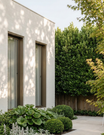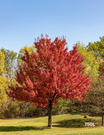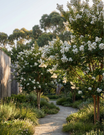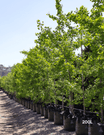Gardens are often considered a canvas for nature's art, and flowering trees offer one of the most captivating ways to vibrate your outdoor space. Flowering trees can transform any garden into a bright, inviting oasis with colorful blooms, unique foliage, and seasonal appeal. This post will explore how to use flowering trees to elevate your garden design, focusing on three exceptional species: Lagerstroemia indica 'Natchez' Magnolia 'Teddy Bear' and Jacaranda mimosifolia. These trees bring color and add a touch of elegance to high-end landscapes, perfect for those who seek luxury and quality in their garden choices.
The Importance of Flowering Trees in Garden Design
Flowering trees are more than just ornamental additions; they serve as focal points that can enhance your garden's overall aesthetic and atmosphere. Their blooms complement other plantings, attract pollinators, and provide seasonal interest. Whether you’re looking for a statement piece or a charming backdrop, choosing the right flowering tree can significantly impact your garden’s look and feel.
Lagerstroemia indica 'Natchez'
The Lagerstroemia indica 'Natchez', commonly known as the Natchez Crepe Myrtle, is a versatile and stunning flowering tree that offers year-round interest. Its white blooms emerge during summer, providing a delicate contrast against its dark green foliage. As autumn arrives, the leaves transition to vibrant orange-red, while the tree's smooth, cinnamon-colored bark adds a textural element during winter. This tree is perfect for those who want a touch of elegance and a splash of color throughout the year, making it an ideal choice for high-end gardens.
Key Facts
- Mature Height: 7-9 meters
- Mature Width: 6-8 meters
- Best Uses: Ideal as a feature tree, small-scale shade tree, or a stunning border tree
- Leaf Appearance: Dark green leaves that transition to orange-red in autumn
- Rate of Growth: Moderate to fast-growing
- Tolerates: Drought, humidity, and clay soil
Why 'Natchez' is Perfect for Your Garden
The Lagerstroemia indica 'Natchez' is the epitome of versatility and charm. Its year-round visual interest means that your garden will never lack color or texture. In summer, the striking white blooms create a refreshing contrast against the surrounding greenery, bringing a serene elegance to your outdoor space. The tree's smooth bark becomes a conversation piece in winter when its colors truly stand out. Furthermore, its tolerance for various environmental conditions, such as drought and humidity, ensures this tree remains low-maintenance, allowing you more time to enjoy your garden’s beauty.
Magnolia 'Teddy Bear'
For those seeking a flowering tree with a touch of luxury, the Magnolia 'Teddy Bear' is an exquisite choice. This compact, evergreen magnolia is known for its creamy-white, fragrant blooms, and glossy, dark green foliage. Unlike many other magnolias, the 'Teddy Bear' variety offers a dense and compact growth habit, making it perfect for smaller garden spaces or as a feature tree in larger landscapes. Its leaves have a unique rust-colored underside, adding an extra layer of color and visual appeal even when the tree is not blooming.
Key Facts
- Mature Height: 3-5 meters
- Mature Width: 2-3 meters
- Best Uses: Ideal for screening, feature planting, or container growth in luxury patios
- Leaf Appearance: Glossy dark green with rust-colored undersides
- Rate of Growth: Slow to moderate growth
- Tolerates Heat, humidity, and moderate coastal conditions
Why 'Teddy Bear' is Perfect for Your Garden
The Magnolia 'Teddy Bear' brings a sense of refinement and sophistication to any garden. Its compact nature makes it suitable for various landscape applications, including tight spaces where other magnolias may not fit. The large, fragrant flowers can fill the air with a delightful scent, creating a welcoming environment for outdoor gatherings. Additionally, its evergreen foliage ensures your garden maintains a lush, green appearance year-round. This tree’s ability to tolerate different environmental conditions further simplifies garden maintenance while providing a luxurious feel.
Jacaranda mimosifolia
If you're looking for a flowering tree that will truly make a statement, consider the Jacaranda mimosifolia, or Jacaranda. Known for its stunning clusters of purple-blue flowers, this tree will surely draw attention when in full bloom. The Jacaranda mimosifolia is a fast-growing, deciduous tree that can provide dappled shade in the summer while letting in sunlight during the winter months, thanks to its fern-like foliage. Its unique structure and brilliant color make it an ideal focal point in high-end gardens that value luxury and aesthetic appeal.
Key Facts
- Mature Height: 10-15 meters
- Mature Width: 8-10 meters
- Best Uses: Excellent as a feature tree, shade tree, or planted in rows for an avenue effect
- Leaf Appearance: Delicate, fern-like, bright green leaves that create a light canopy
- Rate of Growth: Fast-growing
- Tolerates: Mild frost, heat, and a variety of soil types
Why Jacaranda is Perfect for Your Garden
The Jacaranda mimosifolia brings drama and beauty to any garden setting. Its vibrant purple-blue flowers not only brighten up the landscape but also create a captivating visual display that can be seen from afar. The light canopy provided by its foliage allows for creative underplanting, letting you design a multi-layered garden space. This tree's fast growth rate ensures that you won't have to wait long to enjoy its benefits, while its resilience to various conditions makes it a practical choice for those who want luxury without the hassle of high maintenance.
Tips for Planting Flowering Trees
Adding flowering trees to your garden requires some thoughtful planning to ensure that they thrive and add to the aesthetic appeal. Here are some essential tips to consider:
- Choose the Right Location: Make sure the tree gets the appropriate amount of sunlight. For instance, Jacaranda mimosifolia loves full sun, while Magnolia 'Teddy Bear' can tolerate partial shade.
- Soil Preparation: Enrich the soil with organic matter before planting to promote healthy root growth.
- Consider Mature Size: Be mindful of the tree's mature height and width to avoid overcrowding in your garden. For instance, Lagerstroemia indica 'Natchez' can spread up to 8 meters.
- Watering: Newly planted trees need regular watering to establish. After the initial period, the watering needs may vary based on species. Magnolia 'Teddy Bear' prefers consistent moisture, whereas Natchez Crepe Myrtle is more drought-tolerant.
- Pruning: Regular pruning helps maintain the desired shape and encourages more blooms. Prune Jacaranda mimosifolia in late winter to control its size and shape.
The Impact of Tree Shapes on Landscape Design
The shape and structure of a tree can significantly influence the overall design of your garden:
- Vase-Shaped Trees: Like the Jacaranda mimosifolia, these create a natural focal point and ample under-canopy space for smaller plants.
- Pyramidal Shapes: The Magnolia 'Teddy Bear' is perfect for creating a structured, formal look.
- Multi-Stemmed Forms: Trees like the Lagerstroemia indica 'Natchez' often have several stems, adding texture and depth to your garden.
Conclusion
Incorporating flowering trees into your garden is a sophisticated way to add color, elegance, and structure. Each species—whether it's the year-round beauty of the Lagerstroemia indica 'Natchez,' the luxurious appeal of the Magnolia 'Teddy Bear,' or the show-stopping blooms of the Jacaranda mimosifolia—brings its unique characteristics, enhancing your outdoor space. Thoughtful tree selection and proper planting techniques will help you create a garden that reflects your style and taste.
FAQs
-
What is the best time to plant flowering trees?
The best time to plant flowering trees is during the cooler months of autumn or early spring when they can establish roots before the growing season begins. -
How much sunlight do flowering trees need?
Most flowering trees prefer full sun, but some, like the Magnolia 'Teddy Bear,' can tolerate partial shade. -
Can flowering trees grow in containers?
Yes, compact species like Magnolia 'Teddy Bear' can be grown in large containers, making them suitable for patios or smaller garden spaces.



















































Leave a comment
This site is protected by hCaptcha and the hCaptcha Privacy Policy and Terms of Service apply.